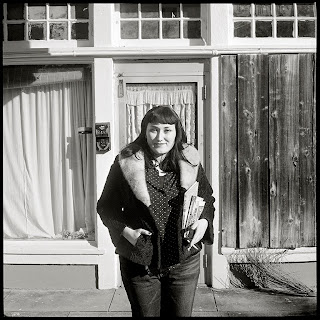In the first part of the 20th century, August Sander stated:
I am not concerned with providing commonplace
photographs like those made in the finer large-scale studios of the city, but
simple, natural portraits that show the subjects in an environment corresponding
to their own individuality, portraits that claim the right to be evaluated as
works of art and to be used as wall ornaments ... It is not my intention either to
criticize or to describe these people, but to create a piece of history with my
pictures.
With this goal, he began his most significant body of work, Citizens of the Twentieth Century, a groundbreaking series of black-and-white photographs that paved the way for such works as Irving Penn's Worlds in a Small Room and Richard Avedon's Portraits of the American West. His influence can be seen down the line from Walker Evans to Diane Arbus.
The Sander influence can be clearly seen in the cool, spare style of Jonathan Traviesa's series, Portraits, currently hanging on the fourth floor of the Ogden Museum. His simple approach to the subjects allows a deeply psychological reading of the image, not just a caricature of a character, but a living personality. In the foreword to Traviesa's book, I believe New Orleans photographer, Richard Sexton, provided an eloquent and succinct critique of the series:
Jonathan’s methodology is about as simple and
straightforward as it gets. Using a Rolleiflex twin-lens camera passed on to him
from his father, loaded with black and white film, he solicits appointments to
photograph his subjects at their home or studio. The settings are outdoors,
keeping the lighting simple and allowing the context of New Orleans to creep
into the frame. His subjects are almost always photographed full figure, and,
around them, filling in the composition, we get a glimpse of where and how they
live. And it is this context that offers familiar fragments of New Orleans: the
decrepit shutter, a lush drape of tropical foliage, a porch swing, a backdrop of
weatherboards, or a beer can either left over from the night before or perhaps
currently in use. The remarkable thing is how natural and comfortable these
individuals fit into their landscape. Whether by fortune or birthplace or the
culmination of a long and circuitous migratory path, they all seem to be where
they belong.
On December 10th during Ogden After Hours, Jonathan Traviesa will be signing his new book, Portraits: Photographs in New Orleans 1998 - 2009. Thirty-seven photographs featured in the publication are currently exhibited on the fourth floor of the Ogden's Goldring Hall.
Jonathan by Jonathan Traviesa









